Physics and Astronomy are two of the most respected fields in science. Are you writing a paper on either of these subjects? Do you want to get noticed? Then you should publish in one of the top Physics and Astronomy Journals. Here is a list of the top scientific journals in the field.
Table of Contents
#1. Reviews of Modern Physics

(You can see the history of its scientometric data on our database here)
Reviews of Modern Physics comes out 4 times every year. It is a peer-reviewed, scientific journal. It first came out in 1929. It is the official journal of the American Physical Society.[1]
The journal publishes review articles by established researchers. It covers topics from all fields of physics. Reviews are usually accessible to all those who need it. The main audience for the journal is graduate students and specialists. It is one of the most prestigious top Physics and Astronomy Journals in the world.
Review articles in the journal summarize cutting-edge research on a topic. This includes all future developments and groundbreaking research. The journal also publishes Nobel Lectures.
All submissions should be readable and well organized. [2] Different types of articles have different word limits. A letter can range from 750-3750 words. A review article may go up to 30,000 words.

#2. Physics Reports

(You can see the history of its scientometric data on our database here)
Physics Reports first came out in 1971. Elsevier publishes it twice every month. A total of 48 issues come out every year.[3] It publishes long and deep reviews of all sorts of topics within physics. The length of these reports is the same of a short book.
The main audience of the journal is professionals working on the cutting edge. It is one of the top Physics and Astronomy Journals in the world.
Topics covered in the journal include astrophysics, cosmology, and atomic, molecular, and optical physics. The journal has an 86% acceptance rate. It takes 2.3 weeks on average to publish your article in the journal.[4] The journal has an option for open access publishing.

#3. Advances in Physics

(You can see the history of its scientometric data on our database here)
Advances in Physics first came out in 1952. It first came out as a supplement to the Philosophical Magazine. It is a peer-reviewed journal on a case-by-case basis. Taylor and Francis publishes it once every two months. A total of 4 issues come out every year.[5]
The journal publishes critical reviews which are relevant to condensed matter physics. The reviews are intended to represent the author’s perspective. The journal covers all topics from condensed matter physics to statistical mechanics. Its audience includes materials scientists, physical chemists, and other physicists. It is one of the top Physics and Astronomy Journals in the world.[6]
A typical submission should be 70-150 pages long. This should include all tables, references, figure captions, etc. The journal has an open access publishing option.[7]
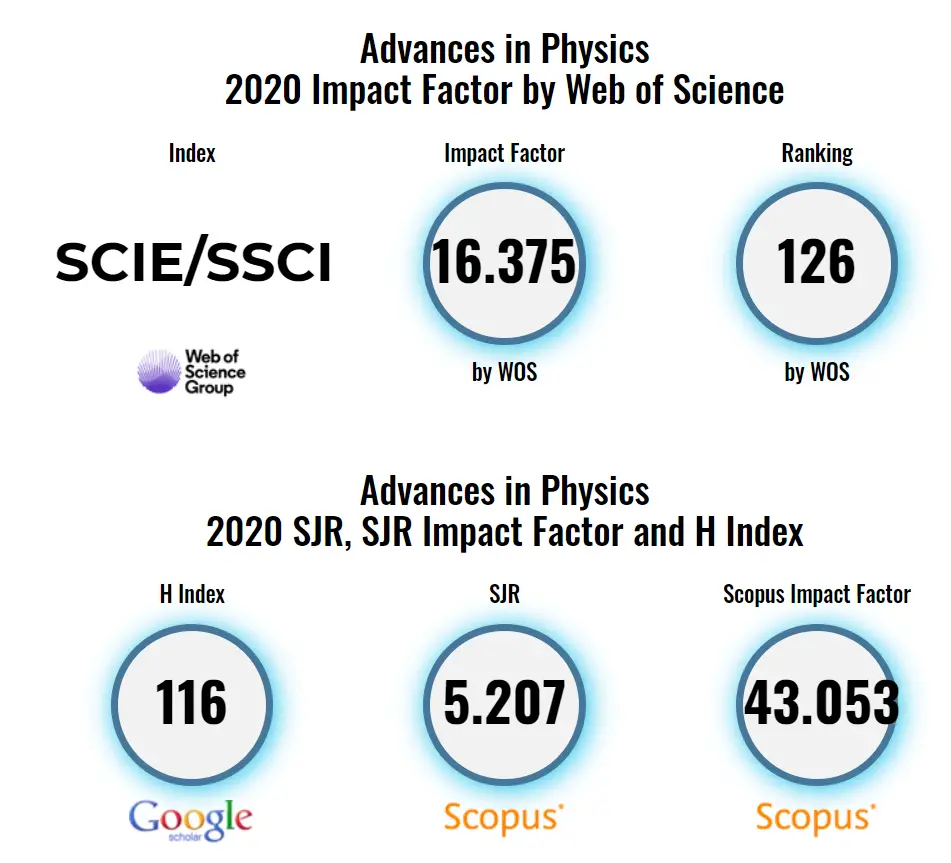
#4. Living Reviews in Relativity

(You can see the history of its scientometric data on our database here)
Living Reviews in Relativity first came out in 1998. It started as the official journal of the Max Planck Institute for Gravitational Physics. In 2015, it was sold to Springer Science + Business Media. It comes out once every year. The journal is open access in full.[8]
The topics covered in the journal range to all fields of physics. It has a suite of high-quality reviews that are kept up to date by authors. This is why it’s called “Living Reviews”. It is one of the top Physics and Astronomy Journals in the world.
All submissions to the journal go through a single-blind review process by two referees.[9]
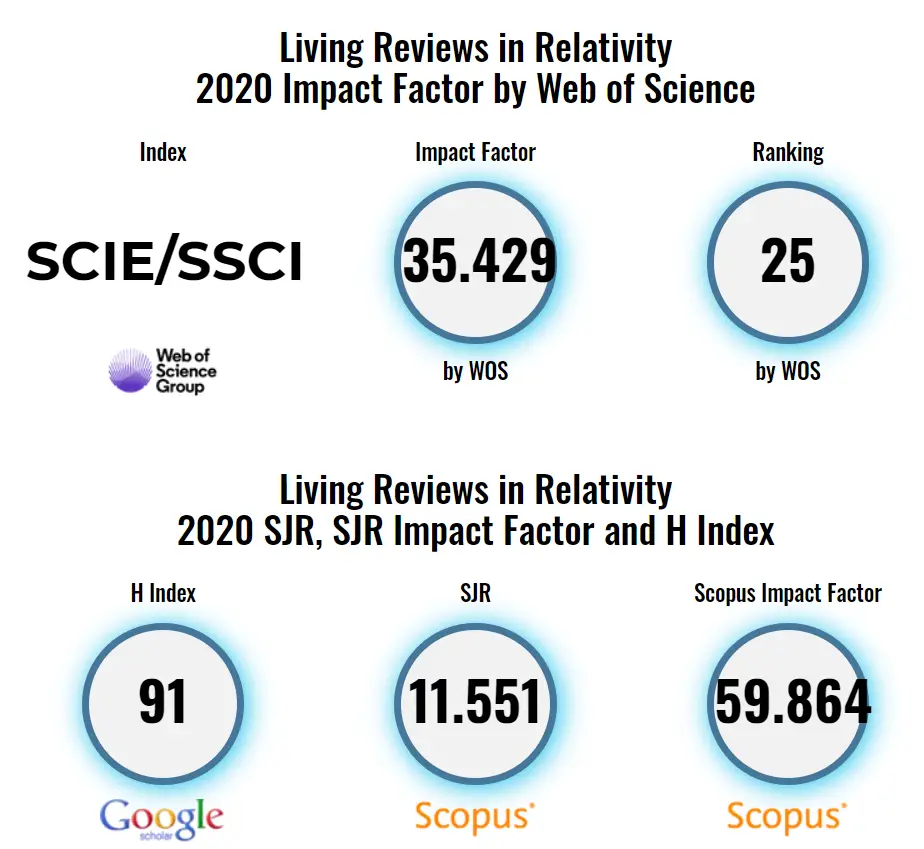
#5. Nature Physics
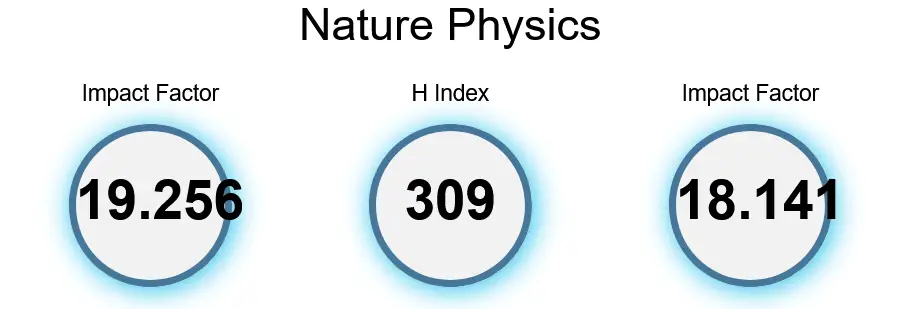
(You can see the history of its scientometric data on our database here)
Nature Physics first came out in 2005. It comes out once each month. It is one of the official journals of Nature. Nature Research publishes it in the UK. It publishes everything from articles, letters, reviews, and news.
It also includes commentaries, book reviews, and correspondence. The journal includes research about all fields in physics. It covers optics and thermodynamics as well as particle physics and biophysics.[10] It is one of the top Physics and Astronomy Journals in the world.
The audience for the journal includes academic societies, professional scientists, and specialists.
You can submit your article to the journal through its own website. Your submission goes through a series of decisions before acceptance. It can be transferred to another Nature journal if the editors feel it apt. [11] The journal has open access publishing. [12]

#6. Annual Review of Fluid Mechanics
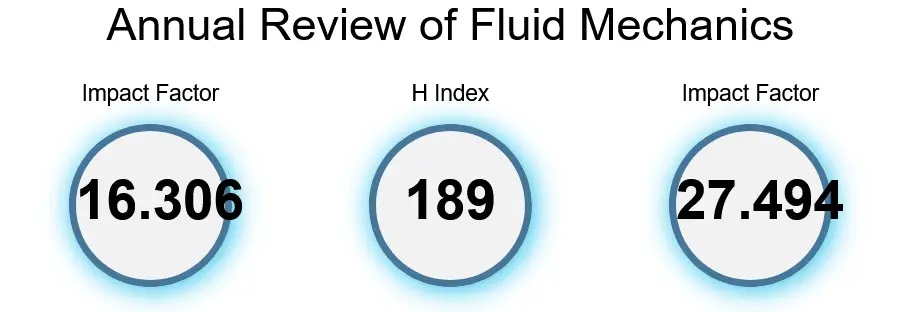
(You can see the history of its scientometric data on our database here)
Annual Review of Fluid Mechanics first came out in 1969. It comes out once every year. It covers cutting-edge research on fluid mechanics. It is one of the top Physics and Astronomy Journals in the world. [13]
It covers research and development in topics like rheology, incompressible and compressible flow, and plasma flow. It also covers topics like control of fluid flow, turbulence, and explosions.
The journal sends you copyedited galley proofs within 16 weeks of the submission. This timeline depends on a lot of factors.[14] The journal has open access publishing. You have to pay a fee to activate that option.
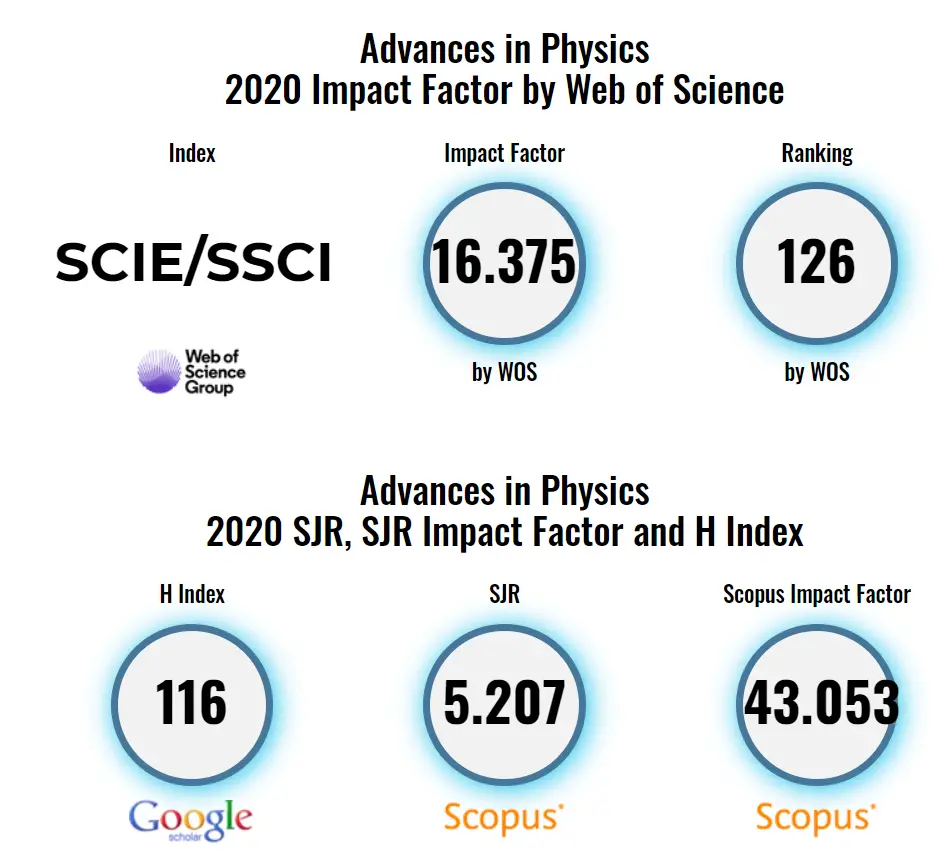
#7. Physical Review X

(You can see the history of its scientometric data on our database here)
Physical Review X first came out in 2011. It comes out 4 times a year. It covers all branches of applied, interdisciplinary, and pure physics. It is an official journal of the American Physical Society. It is a highly selective journal.
It aims to attract and publish papers which are high in originality and substance. The journal places a high value on innovation and long term impact.[15]
The journal is open access in full. It is one of the top Physics and Astronomy Journals in the world.
You can submit your manuscripts on the Submissions Server for the journal. You should take care of readability for your paper. This will allow your reviews process to be smoother. [16]
You will get a permanent APS manuscript code after two days of successful submission. [17]
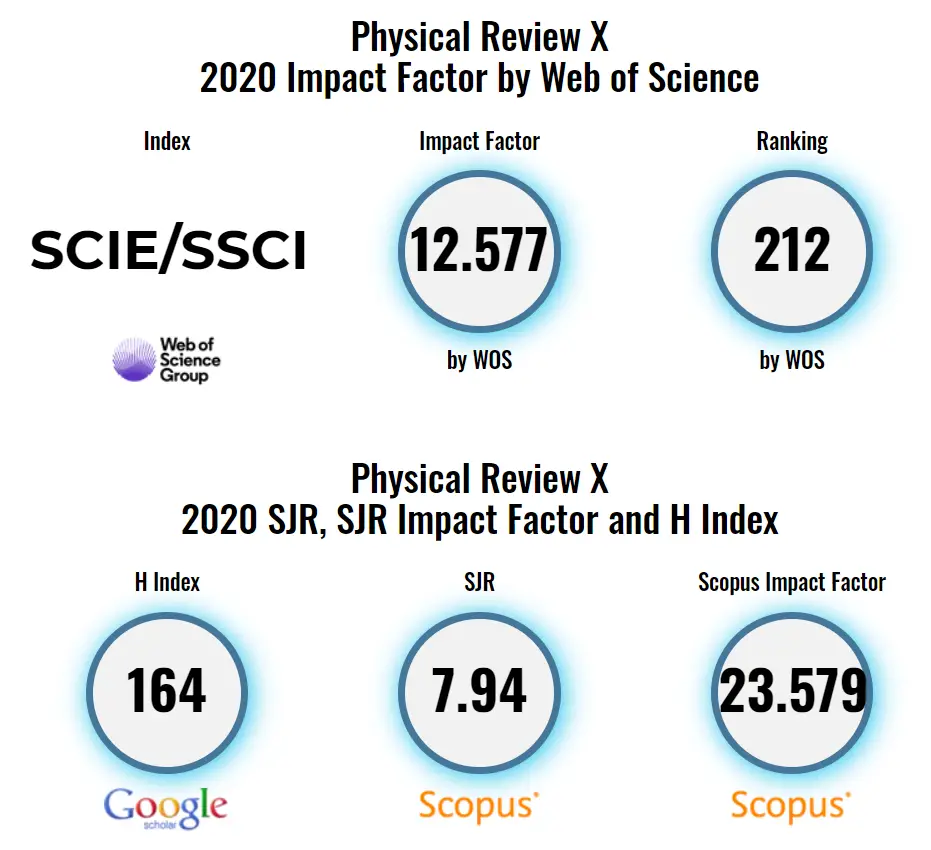
#8. Applied Physics Reviews

(You can see the history of its scientometric data on our database here)
Applied Physics Reviews first came out in 1980. It is the official journal of the American Institute of Physics.[18] It comes out once every year. It publishes original research and reviews on physics topics.
It covers both experimental and theoretical physics. It first came out as a part of the Journal of Applied Physics. In 2014 it became independent. The journal covers everything from quantum physics to condensed matter physics. Each issue contains a comprehensive review of each topic it covers. It is one of the top Physics and Astronomy Journals in the world.
All submissions should be on Microsoft Word or LaTeX. All tables should be created with Word or LaTeX. All equations should be editable.[19]
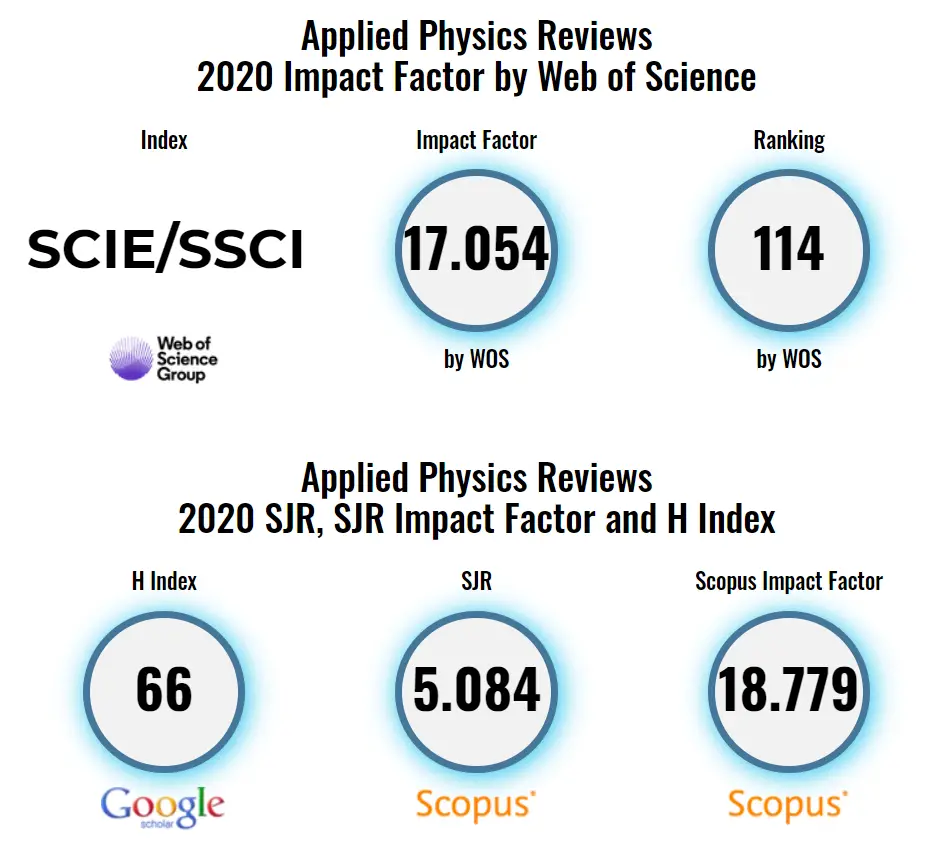
#9. Progress in Particle and Nuclear Physics

(You can see the history of its scientometric data on our database here)
Progress in Particle and Nuclear Physics is a peer-reviewed journal. It is open access in full. The journal comes out four times a year. It discusses new developments in the field of particle and nuclear physics.[20] It is one of the top Physics and Astronomy Journals in the world.
It covers topics like mesons, isobars, quarks, particle symmetries, and others. It also covers topics on astrophysics and nucleo-genesis. The journal also covers papers on physics applications in other fields. This includes medical and archaeological fields as well.
Authors can submit their papers in PDF or in word format. All submissions have to be free of spelling and grammatical errors.[21]
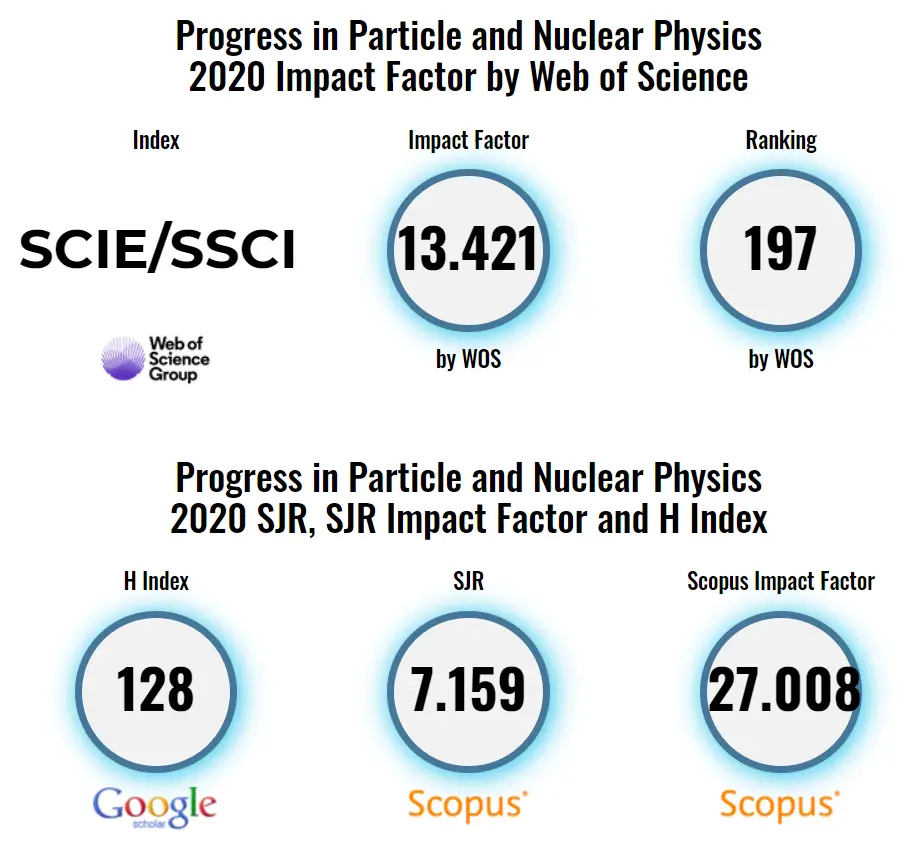
#10. Topics in Applied Physics

(You can see the history of its scientometric data on our database here)
Topics in Applied Physics first came out in 1973. It publishes once every year. It is a series of review books which present a comprehensive survey of a physics topic. Springer Media publishes it.
It has a broad readership across professionals and academics. Every volume contains a high-quality review of important contributions to physics. The topics covered include ultrafast physics, photonics, nanoscale science and technology, etc. [22]
Other topics include microscopy and advanced imaging, and biomaterials and biophysics.
The journal is edited and written by leading scientists from around the world. It is one of the top Physics and Astronomy Journals in the world. You can find submissions guidelines in detail on the Springer website.

You might also be interested in these:
- Top Pharmacology Toxicology And Pharmaceutics Journals – How to get published in 2021?
- Top Material Journals – How to get published in 2021?
- Top Neuroscience Journals – How to get published in 2021?
- Top Immunology And Microbiology Journals – How to get published in 2021?
- Top Health Journals – How to get published in 2021?
References
[1] https://journals.aps.org/rmp/about
[2] https://journals.aps.org/rmp/authors#submit
[3] https://www.journals.elsevier.com/physics-reports
[4] https://www.elsevier.com/journals/physics-reports/0370-1573/guide-for-authors
[5] https://www.tandfonline.com/action/journalInformation?journalCode=tadp20
[6] https://www.tandfonline.com/action/journalInformation?show=aimsScope&journalCode=tadp20
[7] https://www.tandfonline.com/action/authorSubmission?show=instructions&journalCode=tadp20#words
[8] https://www.springer.com/journal/41114/aims-and-scope
[9] https://www.springer.com/journal/41114
[10] https://www.nature.com/nphys/aims
[11] https://www.nature.com/nphys/for-authors/peer-review-and-publication
[12] https://www.nature.com/nphys/for-authors/publishing-options
[13] https://www.annualreviews.org/journal/fluid
[14] https://www.annualreviews.org/page/authors/author-instructions/submitting/publication-timeline
[15] https://journals.aps.org/prx/about
[16] https://journals.aps.org/prx/authors#content
[17] https://journals.aps.org/prx/authors/web-submission-guidelines-physical-review
[18] https://aip.scitation.org/are/info/focus
[19] https://aip.scitation.org/are/authors/manuscript
[20] https://www.journals.elsevier.com/progress-in-particle-and-nuclear-physics
[21] https://www.elsevier.com/journals/progress-in-particle-and-nuclear-physics/0146-6410/guide-for-authors
[22] https://www.springer.com/series/560
Link: https://docs.google.com/document/d/1ggRRa6ITn6GGLPGZbdJyjn68EEB7HovMXWBl9W9rlWA/edit#


